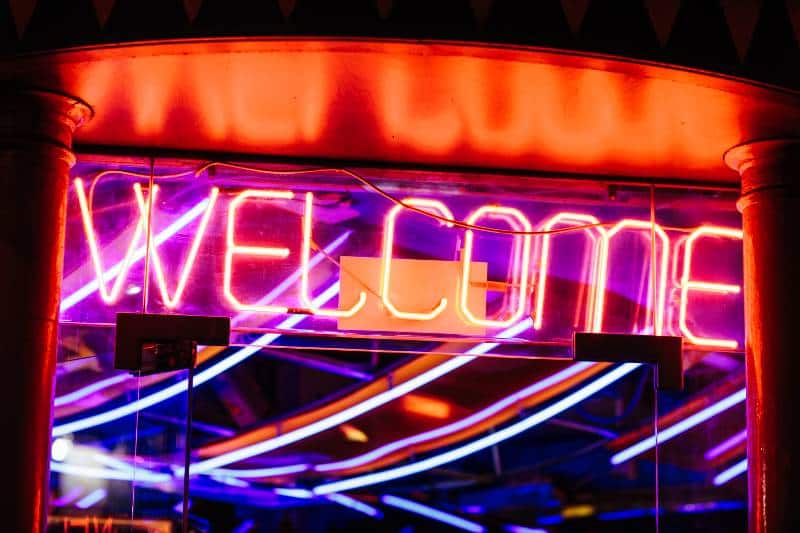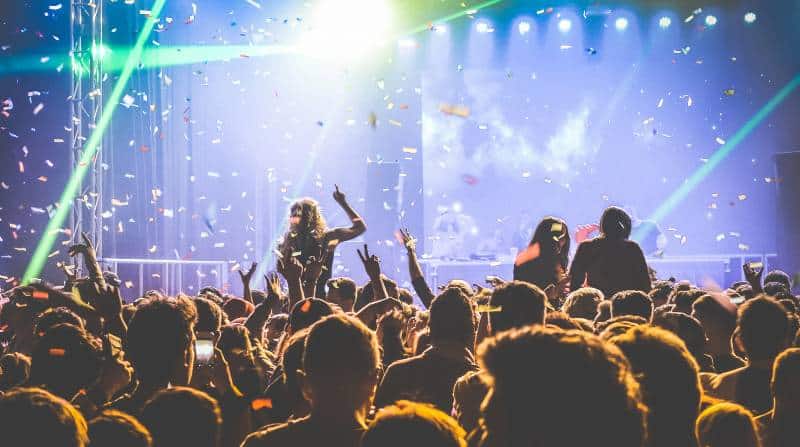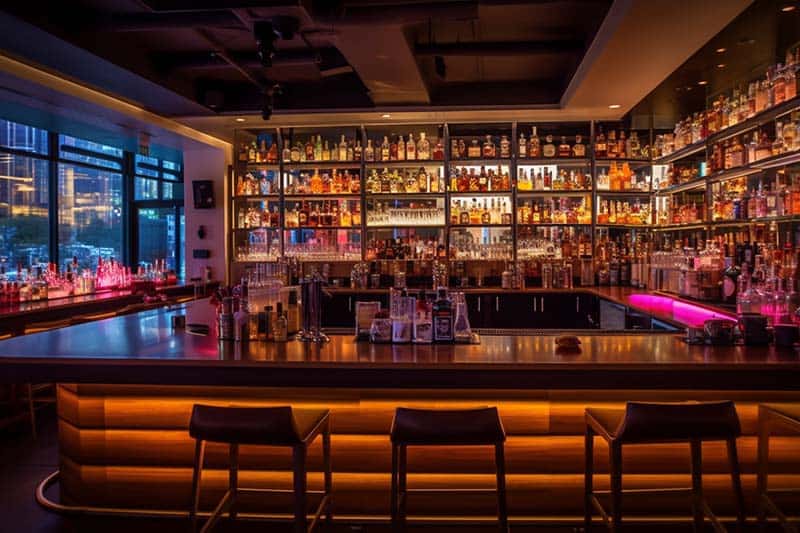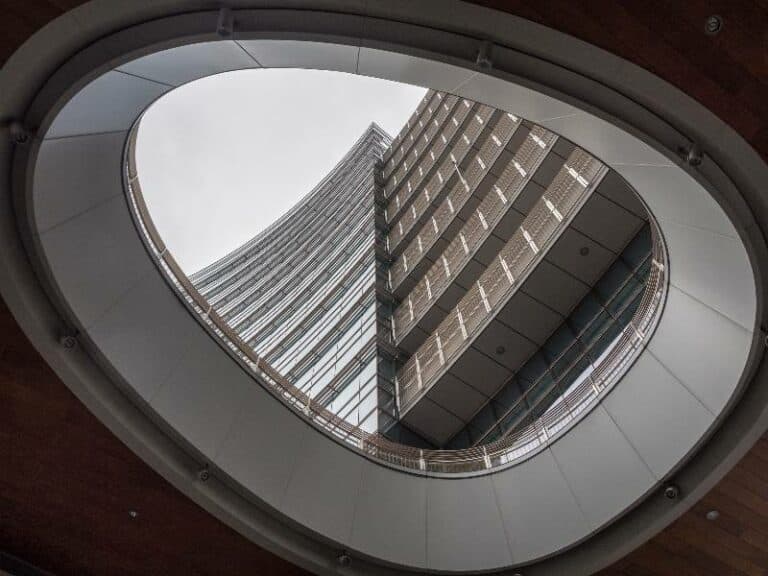The future of nightclubs and bars in commercial real estate is something that is often discussed, but rarely understood. This can lead to confusion among buyers and sellers who don’t know where the industry is headed. With the increasing popularity of renting out private venues for events such as weddings or birthdays, more people are choosing space over permanence when it comes to nightlife festivities – leaving many asking how this will affect their investment strategies in these areas.
In this blog post, we’ll explore how recent changes in regulations around alcohol sales have impacted traditional club spaces, current trends that are emerging around alternative event destinations for late-night entertainment, and a few key points to consider if you’re looking to invest in commercial real estate related to nightlife venues.
According to Credence Research, the pubs, commercial bars, and nightclubs market is expected to drive global market growth by $24.60 billion from 2022 to 2026, at a CAGR of 4.28%. This growth is attributed to the changing consumer lifestyles and increased disposable income in the Asia Pacific region.
Key Takeaways
- The pubs, bars, and nightclubs market is expected to grow significantly in the next few years, recent changes to regulations around alcohol sales have impacted traditional club spaces.
- Alternative event destinations for late-night entertainment are becoming increasingly popular due to their convenience and cost-effectiveness.
- Investors should consider the market trends of nightlife venues when looking to invest in commercial real estate. Buyers and sellers need to understand the current direction of nightclubs and bars in commercial real estate before investing, as this knowledge can help them make informed decisions that will be beneficial for their future investments.

Current State of Nightclubs and Bars in Commercial Real Estate
The landscape of commercial real estate, specifically the pubs, bars, and nightclubs market sector, is on an upward trajectory, poised for substantial growth. A recent analysis anticipates this vibrant market to surge by $31.46 billion from 2022 to 2027, marking a compound annual growth rate (CAGR) of 5.09% during this period.
This comprehensive report encapsulates a full-spectrum analysis, offering insights into market size and forecast, emerging trends, key growth drivers, and challenges. The analysis also includes an in-depth vendor examination encompassing approximately 25 leading providers in the sector.
The report presents a current, relevant analysis reflecting the market’s existing scenario, the most recent trends and drivers, and the general market environment. The surge in the number of pubs, bars, and nightclubs market, shifts in consumer lifestyles, and a noticeable rise in disposable income, particularly in the Asia-Pacific region, are the primary growth drivers. Additionally, strategic expansion and acquisitions in the commercial real estate sector contribute to this positive trend.
The Role of Nightclubs and Bars in the Market
Nightclubs and bars play a vital role in the overall market, spanning commercial real estate, the hospitality industry, and local economies.
- Commercial Real Estate: Nightclubs and bars contribute significantly to the vibrancy and attractiveness of commercial real estate. They are often anchor tenants that draw foot traffic, which can increase the value of surrounding properties and enhance the overall appeal of an area. Their presence can transform neighborhoods into bustling entertainment districts, boosting commercial property demand and rental income.
- Hospitality Industry: As essential components of the hospitality sector, nightclubs, and bars provide entertainment, social venues, and cultural experiences for both locals and tourists. Their success can indicate a healthy tourism industry and can contribute to the growth of related businesses like hotels, restaurants, and hotel chains, as well as transportation services.
- Local Economies: On a more local level, these establishments help drive economic activity. They create jobs, pay taxes, and contribute to the local economy’s overall growth. The foot traffic they attract can support other businesses in the vicinity, such as retail stores and eateries.
- Consumer Trends: Nightclubs and bars also play a role in reflecting and shaping consumer trends. They often cater to evolving consumer preferences, such as the growing interest in craft cocktails or locally sourced beverages, or the need for spaces to host private events. In doing so, they drive innovation in the food and beverage industry.
- Community and Culture: Lastly, these venues often serve as important social and cultural hubs in communities, providing spaces for music, art, and social interaction. They can contribute to a city’s cultural identity and diversity, enhancing its appeal to residents and visitors alike.
In summary, the role of nightclubs and bars extends beyond just being places to enjoy a drink or dance the night away. They’re key contributors to commercial real estate values, local economies, consumer trend evolution, and the cultural vibrancy of the areas they inhabit.
Current trends and challenges
Nightclubs like never before
The landscape of the nightclub industry is evolving with experience becoming a defining key factor more than ever before. The classic clubbing industry experience—paying a substantial cover charge, lounging in an exclusive section, and essentially, replicating an experience one could have had in a more tranquil, well-lit home environment—is no longer the draw it once was. Aspiring nightclub and bar owners must be aware that clientele seeking a night of unforgettable adventure have shifted their expectations significantly.
Industry insiders have noted a decline in the appeal of high-priced DJ-driven events and extravagant bottle service, once staples of the ‘traditional’ nightclub scene. The trend is now leaning towards venues offering multiple experiences within the same space, a concept that resonates strongly with younger demographics.
These multi-faceted venues offer varied experiences, successfully retaining customers for extended periods. In our highly connected society, where individuals are constantly engaged with their smartphones and new experiences, multi-concept venues have the edge. They cater to the modern need for variety and change, with multiple activities happening simultaneously to maintain interest and stave off boredom.
Beverages in trend
The trends in alcoholic beverages are also changing, with tequila and whiskey, particularly bourbon, gaining favor among drinkers. They are increasingly considered as ‘stylish’ choices compared to their status in the past. Mezcal, a traditional Mexican spirit, is also rising in popularity, adding a new dimension to the spirits market.
This trend isn’t just anecdotal—statistical evidence supports these observations.
As an example, back in the years, mezcal already held its own as the third-largest alcoholic export from Mexico. These changing preferences are reshaping the bar and nightclub industry, pushing operators to diversify their offerings and cater to evolving tastes.
Impact of Technology on Nightclubs and Bars
The integration of technology into the operations of nightclubs and bars has revolutionized the industry, enhancing customer experience and streamlining business operations.
Adoption of digital payment and booking systems
Digitalization has transformed the way customers book their tables and pay for their services at nightclubs and bars. Online booking systems have made it more convenient for customers to reserve tables ahead of time, eliminating wait times and ensuring a smoother experience. Moreover, digital payment systems and contactless payments have expedited transactions, making the checkout process quicker and more efficient. They have also improved the accuracy of transactions and made it easier for businesses to keep track of their finances.
Virtual reality and augmented reality experiences
These immersive technologies are being leveraged to elevate the customer experience to new levels. With VR and AR, customers can experience unique, immersive, and interactive environments while enjoying their drinks. For example, patrons could have the sensation of being at a live concert or in an exotic location, all while remaining in the venue. These technologies can make a visit to a bar or nightclub a truly unique and memorable experience, differentiating the venue from competitors.
Technology is not just enhancing customer experiences but also providing valuable data and insights to businesses. This can help them better understand their customers’ behavior and preferences, optimize their operations, improve their marketing strategies, and ultimately drive revenue growth. It’s clear that technology will continue to play a significant role in shaping the future of nightclubs and bars.
The Effect of the Pandemic on Nightclubs and Bars
Changes brought about by COVID-19
- Reduced Operations: Government-mandated lockdowns and social distancing regulations led to the temporary closure of many establishments, and once they reopened, they had to operate at reduced capacity.
- Health and Safety Measures: Venues had to implement strict health and safety measures, such as frequent sanitation, temperature checks, face mask requirements, and rearranging layouts to accommodate social distancing.
- A shift in Consumer Behavior: The pandemic sparked a shift in consumer behavior, with many people choosing to stay at home to reduce their risk of exposure to the virus. This led to decreased foot traffic and lower revenues for many bars and nightclubs.
Strategies implemented for survival and adaptation
- Outdoor Spaces and Ventilation: Many bars and nightclubs adapted their spaces to allow for outdoor seating or improved ventilation to reduce the risk of virus transmission.
- Diversification: Some establishments diversified their offerings to stay afloat, such as providing food and drink takeout and delivery services, selling cocktail kits and merchandise, or hosting virtual events and classes.
- Technology Adoption: The industry saw increased adoption of technology, including digital menus, online booking systems, contactless payments, and even VR and AR experiences to provide entertainment for patrons at home.
- Cost Reduction: Many businesses undertook cost-cutting measures, such as negotiating rent relief with landlords, reducing staff numbers, or temporarily closing down.
- Government Support: Many establishments sought financial assistance through government aid packages, grants, or loans designed to support businesses impacted by the pandemic.
Moving forward, the resilience and adaptability shown by the nightclub and bar industry will be crucial in navigating the evolving challenges and ensuring survival and growth in the post-pandemic world.
The Future of Nightclubs and Bars in Commercial Real Estate
Potential changes in location and size preferences
Nightclubs and bars have traditionally been located in densely populated urban areas. However, as more people move to suburban areas, there could be an increased demand for nightlife in these regions. Consequently, bars and nightclubs may need to adopt a more flexible approach to location to cater to these changing consumer preferences. The size of these venues may also see changes. Large venues may be replaced by more intimate, boutique-style bars and clubs that allow for a personalized experience.
Sustainability and ‘green’ initiatives
The environmental impact of businesses is becoming a growing concern. Nightclubs and bars could aim to become more sustainable through various initiatives. These might include using energy-efficient lighting and sound systems, implementing recycling programs, sourcing locally produced beverages, or even incorporating green spaces into their designs. There could also be a shift towards “zero-waste” bars that aim to minimize their environmental footprint by reducing food and drink waste.
To learn more about this exciting green initiative, which aims to revolutionize the way we think about waste management, make sure to check out an article I wrote. In it, I dig deeper into the inspiration behind the project and share some of the successes we’ve already seen.
The rise of multifunctional spaces
Nightclubs and bars are increasingly becoming multifunctional spaces, blending food and drink with activities such as live music, comedy shows, art exhibitions, or even co-working spaces during off-peak hours. This approach not only maximizes the use of real estate but also allows these establishments to attract a broader range of customers.
Increasing emphasis on experiences
The future of nightclubs and bars may see a stronger focus on providing unique experiences to patrons. This could include themed nights, interactive technology such as virtual reality, or immersive entertainment. The objective would be to create memorable experiences that can’t be replicated at home, thereby encouraging patrons to return.
Case Studies
The Botanist – UK
The Botanist is a chain of bars in the UK that has successfully embraced the multifunctional space trend. By day, they operate as a restaurant serving food and a wide variety of botanical cocktails. By night, they transform into an entertainment venue with live music and DJ sets. This shift in ambiance allows The Botanist to appeal to a wide range of customers and maximize the use of their space.
Freo.Social – Australia
Freo Social in Fremantle, Western Australia, is a prime example of the experience-focused trend. This venue is located in a heritage-listed artillery drill hall and offers a range of experiences including a bar, restaurant, live music venue, and even a games yard. This focus on variety has helped Freo. Social become a beloved hub in the community.
The Green Vic – UK
The Green Vic in London, UK, is aiming to become the world’s most ethical pub. Almost everything they sell is charitable, and they have a strong focus on sustainable and ethical suppliers. They also hire staff who have been homeless or are otherwise vulnerable, offering them training and employment opportunities. Their approach has been met with widespread acclaim and proves that ‘green’ initiatives can be good for business.
Two Schmucks – Spain
Two Schmucks in Barcelona is a bar that has managed to stay relevant and successful despite the challenges brought on by the COVID-19 pandemic. They transformed their business model by introducing a delivery service for their cocktails when the bar was forced to close during lockdowns. They also use a sliding scale for drink prices, allowing customers to pay what they can afford.
These case studies show that it’s possible for bars and nightclubs to transform and adapt successfully in the face of changing trends and challenges. By embracing new trends, focusing on sustainability, and providing unique experiences, these venues have been able to thrive in a rapidly evolving industry.
Nightclubs Development Opportunity: Investing in Bar Real Estate
The enduring appeal of bars & nightclubs has made them a staple of dance culture and nightlife traditions for decades. As of 2023, there were 67,531 bars and nightclub businesses in the United States, representing a 0.9% increase from 2022. Although data for 2024 is not yet available, the growth in the previous year suggests that the desire for large groups of people to celebrate together remains strong. As the world continues to move past the pandemic, this trend is expected to persist.
Investing in nightclubs and bars can be a lucrative venture, with potential nightly profits ranging from $1,000 to $50,000 depending on factors such as location, design, and marketing success. However, the cost of opening a nightclub varies greatly based on several factors, including:
- Type of nightclub, rent prices, equipment, and materials
- Location (e.g., small city vs. New York City)
- Additional factors: alcohol permit, entertainment rates, security, and expensive sound and light equipment
On average, opening a bar or nightclub in the United States costs between $240,000 and $840,000. One cost-effective strategy for opening a nightclub is to buy or rent a property that used to be a club or large bar, which can lower startup costs and simplify the design process.
When considering the cost of opening a nightclub by square foot, the average cost is $124 per square foot. The average size of a nightclub ranges from 2,500 to 10,000 square feet, so a 5,000-square-foot nightclub’s real estate costs would be around $620,000.
To ensure that you are spending within your budget throughout the startup process, it’s essential to map out all expected costs beforehand. Create an outline of expenses and funding sources, such as business loans, government grants, or cash. Developing a comprehensive business plan will help you prepare for the nightclub startup experience and navigate the various costs and operational expenses involved.

The Future of Nightclubs and Bars in Commercial Real Estate FAQs
What future trends are expected in the nightclub and bar industry?
Some of the trends expected in the nightclub and bar industry include diversification, technology adoption, cost reduction, government support, potential changes in location preferences, sustainability and ‘green’ initiatives, the rise of multifunctional spaces, and an increased emphasis on experiences.
How will sustainability initiatives influence nightclubs and bars in commercial real estate?
Sustainability initiatives will likely play an important role in the future of nightclubs and bars in commercial real estate. These initiatives could include using energy-efficient lighting and sound systems, implementing recycling programs, sourcing locally produced beverages, or even incorporating green spaces into their designs. There could also be a shift towards “zero-waste” bars that aim to minimize their environmental footprint by reducing food and drink waste.
How is the rise of multifunctional spaces changing the scene for nightclubs and bars?
The rise of multifunctional spaces is helping nightclubs and bars maximize the use of their real estate. This approach allows them to blend food and drink with activities such as live music, comedy shows, art exhibitions, or even co-working spaces during off-peak hours. This helps them attract a broader range of customers and increase revenue potential.
How does the changing landscape of nightclubs and bars impact commercial real estate?
The changing landscape of nightclubs and bars has an impact on commercial real estate in various ways. These trends could lead to changes in the size of venues, different location preferences, and a greater focus on sustainability initiatives. In addition, multifunctional spaces are becoming increasingly popular as they allow for more efficient use of space while also appealing to a larger customer base. As such, commercial real estate investors should pay close attention to the latest trends and adjust their strategies accordingly.
What can we learn from successful transformations in the industry?
Case studies of successful transformations in the nightclub and bar industry offer important insights. The Botanist is a chain of bars in the UK that has successfully embraced the multifunctional space trend, while Freo. Social in Fremantle, Australia focuses on providing unique experiences to patrons. The Green Vic in London is aiming to become the world’s most ethical pub, and Two Schmucks in Barcelona has managed to stay relevant by introducing a delivery service for their cocktails. These examples show that bars and nightclubs can transform and adapt successfully in the face of changing trends and challenges.
How much is the net profit?
Did you know that bars have profit margins as high as 80%? On average, bar owners make $27,500 a month in revenue, which amounts to a whopping $330,000 per year. But wait, there’s more! After taking out expenses (which average about $24,200 per month), bar owners end up with around $39,600 in net profit per year.
Conclusion
When looking at the future of nightclubs and bars in commercial real estate, potential buyers need to consider the market trends before investing. It’s important to take into account how much late-night entertainment locations cost if they’re cost-efficient options and their convenience. Ultimately, by understanding the current directions nightclubs and bars are heading in commercial real estate you have a better chance of making lucrative investments.
If you’re still uncertain about what commercial real estate investments for these types of properties might look like please call me or schedule a free consultation to get your questions answered promptly and better understand the market to make an informed decision.
The future looks bright for late-night entertainment venues, and I’d be honored to help guide investors toward the right decision that fits your needs.
Blog Articles Disclaimer
The information presented in articles on our website or affiliated platforms is exclusively intended for informational purposes. It’s crucial to grasp that this content does not constitute professional advice or services. We strongly recommend our readers to seek guidance from appropriately qualified experts, including, but not limited to, real estate and other attorneys, accountants, financial planners, bankers, mortgage professionals, architects, government officials, engineers, and related professionals. These experts can offer personalized counsel tailored to the specific nuances of your individual circumstances. Relying on the content without consulting the relevant experts may hinder informed decision-making. Consequently, neither Tolj Commercial Real Estate nor its agents assume any responsibility for potential consequences that may arise from such action.






